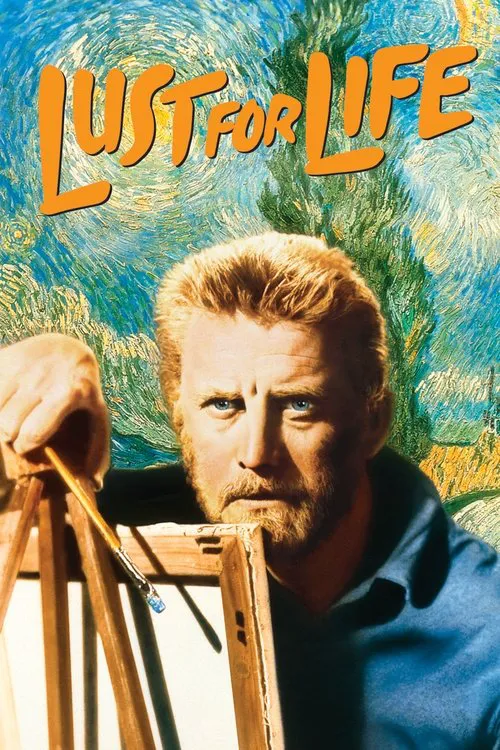Lust for Life

Plot
Vincent Van Gogh, an unapologetically intense and imaginative Dutch painter, is a force to be reckoned with in the world of art. Despite an undeniable talent that is evident in his brushstrokes and colors, Van Gogh is haunted by the demons of mental illness and the crippling frustrations of failure. The world, it seems, is not yet ready for his genius, and the weight of this realization threatens to consume him whole. In the hopes of escaping the stifling effects of the constraints and expectations that surround him in Holland, Van Gogh makes the bold decision to leave his homeland for the more liberated and free-thinking artistic community of France. This move marks a turning point in his life, as he embarks on a journey of self-discovery and creative growth that will ultimately change him forever. Upon his arrival in France, Van Gogh is met with a mix of excitement and skepticism by the local art world. While some see his unbridled passion and energy as a source of inspiration, others view him as an outsider, a madman with a paintbrush who is better suited to the confines of a mental institution than a studio. Despite these initial doubts, Van Gogh persists in his pursuit of artistic expression, pouring his heart and soul into his work in an effort to create something truly original and meaningful. His struggles are not limited to the creative sphere, however, as he grapples with the all-consuming forces of mental illness that have long plagued him. Van Gogh's relationship with his brother, Theo, is one of the few constants in his chaotic and often tumultuous life. Theo is a constant source of support and encouragement, providing his brother with the emotional support and practical aid that he so desperately needs. The bond between the two brothers is strong and unbreakable, and it is a testament to their close relationship that Theo remains steadfastly committed to Van Gogh's well-being, even in the face of adversity. One of the pivotal figures in Van Gogh's French adventure is fellow painter Paul Gauguin. A talented and volatile individual, Gauguin is the epitome of the tortured artist, with a penchant for the provocative and the unconventional. While Van Gogh sees Gauguin as a kindred spirit, someone who shares his passion and his drive to create something truly original, their relationship is complicated and often fraught. Gauguin's influence on Van Gogh is undeniable, as the two men engage in a fierce and intense rivalry that pushes the boundaries of artistic expression. As they work and create together, their relationship becomes increasingly volatile, culminating in a dramatic confrontation that threatens to destroy their bond for good. Meanwhile, Van Gogh's relationships with the women in his life are just as complex and multifaceted as his artistic endeavors. His romance with Sien, a brothel worker, is marked by a deep emotional connection, but one that ultimately proves impossible to sustain. His subsequent involvement with Kee Vos-Stricker, a kind-hearted peasant woman, is more platonic in nature, but one that provides Van Gogh with a sense of comfort and stability that he has been lacking. As the days turn into weeks, and the weeks turn into months, Van Gogh's reputation as an artist begins to grow. His bold and expressive paintings, which have always been marked by a sense of raw emotion and unbridled passion, start to garner attention and acclaim from the wider artistic community. But this newfound success is tempered by the all-consuming forces of mental illness that continue to plague him. The strain of living with bipolar disorder and the crippling episodes of depression that accompany it prove to be too much for Van Gogh, and in the end, it is this that proves to be his undoing. Tragically, he will take his own life in an effort to escape the pain and suffering that has come to define his life. The impact of Van Gogh's death is felt far beyond the boundaries of the artistic world, however. His legacy, both as an artist and as a person, continues to inspire and influence generations to come. In the end, it is a testament to his enduring talent and his unrelenting passion that he will remain one of the most beloved and revered artists in all of history.
Reviews
Recommendations




